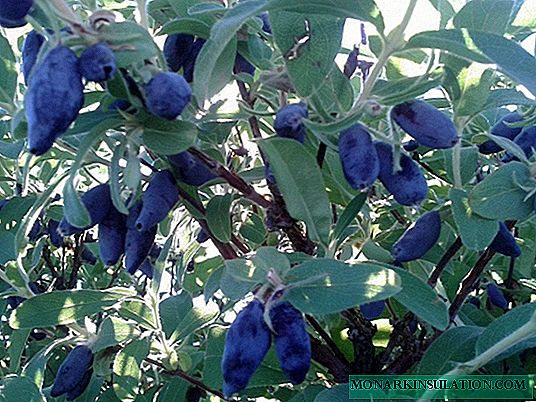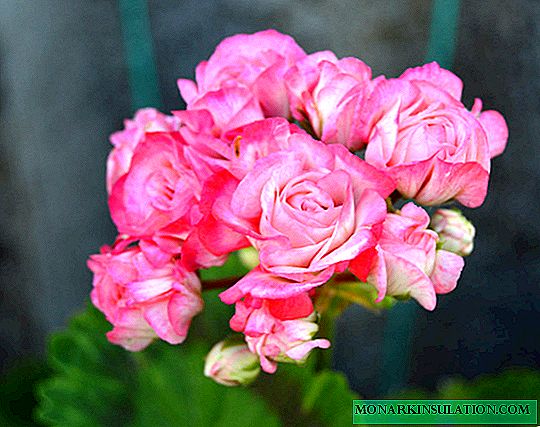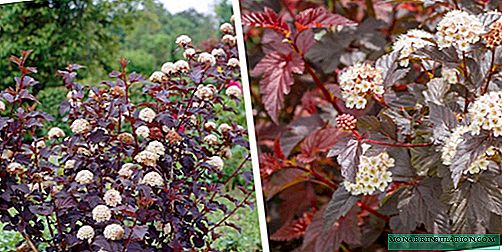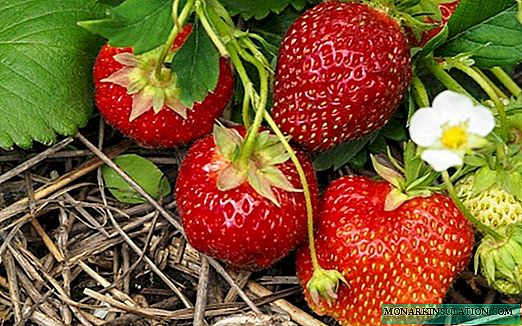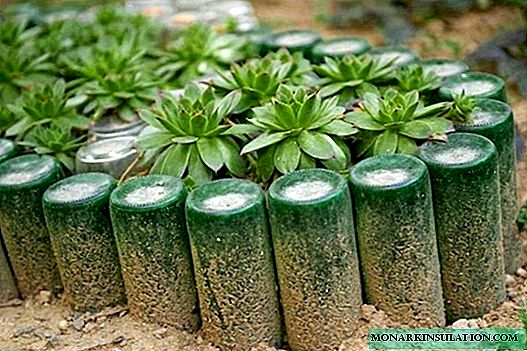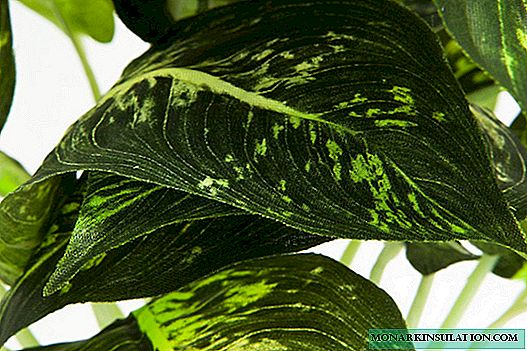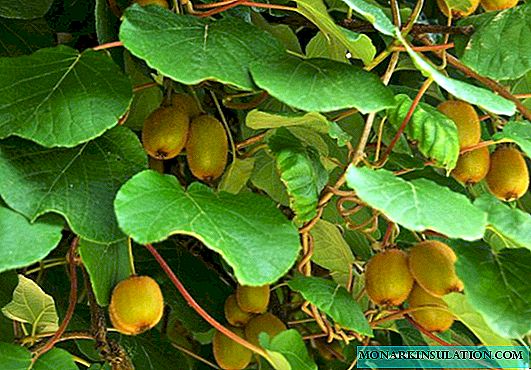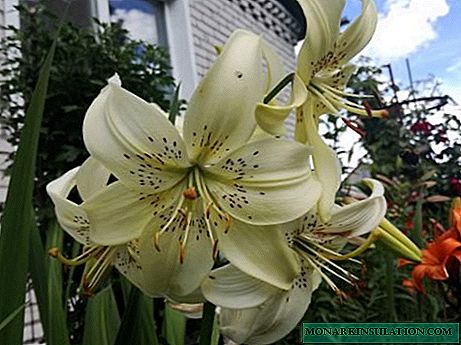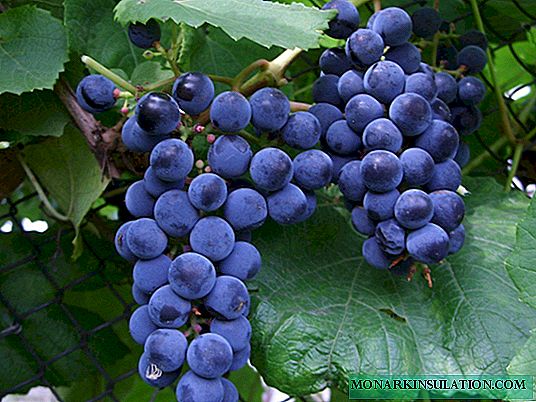
Grapes in Russia are not very easy to grow. Many varieties suitable for harsh climatic conditions for winter hardiness have a mediocre taste. But there are hybrid forms in which both taste and winter hardiness are at a high level. These hybrids include Chernysh grapes.
History of Chernysh grape cultivation
The hybrid form of aronia Chernysh obtained by breeders VNIIViV them. Ya.I. Potapenko. Bred on the basis of crossing Agate Donskoy and Rusomol. It largely repeats the properties of Agate Donskoy and is therefore considered an improved form of this variety.
Due to the high survival rate of seedlings, good taste and other advantages, it has gained popularity among many wine growers in Russia.
Chernysh grape variety - video
Grade description
Black tastes good and is recommended for table consumption. It has early ripening - from the beginning of the growing season to full ripeness, about 115-120 days pass.

Being an early variety, Chernysh already darkens in early July
The bushes are characterized by average growth indicators, inferior in this parent variety Agat Donskoy. Bushes grow "dense", with a large number of shoots (of which more than 75% are fruitful), which mature well by autumn. A characteristic feature of the variety is the good survival of cuttings to stock, as well as a high ability to root formation. The variety does not need pollinating plants, as it has bisexual flowers.

With proper care, each Chernysh shoot gives 1.5-2 brushes of grapes
An average of 1.5-1.8 brushes are formed on each fruit shoot. The clusters are large (500-700 g, sometimes 1000 g), cylindrical-conical or shapeless. The cluster structure is dense. The berries are spherical, rather large - 2.2 ... 2.6 cm in diameter, covered with thin skin of dark blue or blue-violet color. The pulp has a fleshy texture and harmonious taste with a slight characteristic aftertaste. The sugar content is quite high - 16-17%, also in the juice there are 6-9 g / l of acids.
Variety Characteristics
Chernysh is willingly grown by middle-Russia vine-growers, as this grape has several advantages:
- high productivity (14-15 kg from 1 bush);
- good taste and beautiful appearance of berries;
- quick healing of cracks that occur when the soil is waterlogged;
- long shelf life of berries on the bushes;
- rather high frost resistance (up to -25 ... -26 aboutC), so that the bushes winter well even with light shelter;
- resistance to diseases, in particular mildew, oidium and gray rot.
Since Chernysh is a descendant of Agat Donskoy and looks like this variety in appearance, many winegrowers compare both varieties and note the positive differences of Chernysh:
- Black berries have a more saturated and beautiful color and a much more pleasant taste;
- the growing season is shorter, the crop is earlier;
- higher rates of rooting of cuttings.
This is not to say that Chernysh is completely devoid of flaws. In the sunshine, berries can get burned and lose their presentation. With excess moisture, the berries crack and even heal without rotting, the appearance of the berries deteriorates.
Planting and growing rules
For planting grapes, a well-lit area with nutritious soil, protected from cold winds, is required. Groundwater should be no closer than 1.5 m from the surface.
Like other grape varieties, Chernysh is best planted in spring (March - early May in the southern regions, the second decade of April - the end of May in the middle lane). Since Chernysh has sufficient frost resistance, it can also be planted in the fall. It is only necessary to bear in mind that only full-fledged seedlings can be used for autumn planting, the soil should be very moist, and 3-4 weeks should remain until frost.
For planting in the spring, you can use the planting of root-own cuttings or grafting in a split.

In order for the vaccine to be successful, the stock should be tightened with a cloth or electrical tape to ensure good contact with the scion
Cuttings for planting are cut from the mature part of the vine (eyes should be at least 4-5) and in the second half of February they are placed with a slice in moist soil or in a jar of water. Typically, by April, cuttings give enough roots for transplanting into the open ground.

Cuttings placed in a jar of moist soil quickly give root
A pit for planting grapes needs to be prepared in 2-3 weeks. The depth and width should be the same and equal to 0.7 ... 0.8 m. It is advisable to put a drainage layer of crushed stone or broken brick on the bottom of the pit (especially in the presence of stagnant moisture). Above it, to half the depth of the pit, compost mixed with soil is added with the addition of 20-30 g of superphosphate. The nutrient mixture is covered with a thin layer of earth.

When planting grapes, do not forget to fill nutrients into the pit - they will support the plant for 2-3 years
When planting, care must be taken not to break the fragile young roots. Having compacted and watered the earth around the seedling, it is advisable to cover it with mulch in order to retain moisture longer.
Planting grapes in spring - video
Another convenient way to propagate grapes is layering. The author of these lines was able to quite successfully propagate almost any grape variety in this way. It is only necessary to choose a conveniently located shoot and gently dug it with earth, and from above press down the dug place with stones or bricks. With good watering, roots will quickly appear on the dug area of the vine. Just do not rush to separate the plant from the mother bush. At the first attempt to propagate by layering, the author made just such a mistake and everything, as it seemed, the independent bushes almost withered away.

With the help of layering, you can quickly get a number of grape bushes
Care for grapes Chernysh
Like other varieties, Chernysh requires regular watering, top dressing and pruning.
Although the bushes are not very strong in growth, they need to be shaped to get a good harvest. It is most convenient to form a grape bush in the form of a fan on single-row trellises. If desired, you can grow grapes on an arch or other types of supports.
Supports for grapes - photo gallery

- Good ventilation is provided on the trellis with a visor to the bushes

- If grapes are grown not only for harvest, but also for decorative purposes, you can grow it on the arch

- Viomshem is called a system of horizontal trellises that allow you to grow a "creeping" bush
Cut grapes in spring and autumn. In spring, pruning should provide a normal load on the bush. For Chernysh, it is 35-45 eyes. Typically, the vines are pruned for 6-8 eyes, but for Chernysh it is allowed to carry out a short pruning (3-4 eyes), since this grape is distinguished by high fertility in the lower part of the shoots.
Grape Formation - Video
In autumn, it is necessary to cut off unripe sections of shoots, as well as remove excess thickening vines. If necessary, rejuvenate the bush for replacement, choose well-ripened young shoots, and old trunks are cut out at the base.
In winter, it is advisable to cover the bushes, despite their frost resistance. To do this, removed from the supports and cut vines are bundled and lowered to the ground. For warming, the shoots are tied with straw, agrofabric, film or other material.

Grapes covered with a film and sprinkled with earth will surely winter without problems
Watering the grapes is necessary - the soil should be moderately moist. The best option is drip irrigation, but if it is impossible to organize it, water is supplied in an amount of 50-60 liters per 1 bush 4-5 times per season. Plants especially need moisture during leaf bloom, before flowering, during ovary growth, and after harvest. In dry autumn, another watering is required - moisture-charging (120 l per 1 bush), which is carried out in November to improve the conditions of the root system wintering.
Water should not be poured under the root; you need to cut furrows for irrigation at a distance of 50-60 cm from the stem.
During ripening, grapes should not be watered - the berries may crack. True, Chernysh is good in that cracked berries are quickly healed and do not rot.
Organization of watering grapes under the root - video
Feeding loves any grape. They need to be combined with irrigation, and mainly potassium and phosphorus preparations are used from mineral substances. A feature of Chernysh is a special susceptibility to increased doses of potash fertilizers. Nitrogen compounds should not be carried away - they cause increased leaf growth to the detriment of ovary formation. Of course, the plant will not live without nitrogen at all, but with the introduction of sufficient amounts of organic matter, the need for grapes in nitrogen compounds is satisfied. In addition to root dressing, it is useful to spray grapes with solutions of trace elements (boron, zinc).
Feeding grapes - video
Pest and Disease Control
Black practically does not give in to fungal diseases such as mildew, oidium and gray rot. Nevertheless, if you want to protect your crop from chance, you should spend 2-3 preventative treatments with fungicides (for example, Bordeaux mixture or lime-sulfur solution).
To protect against birds and wasps, it is best not to spare time and effort to wrap each brush with a mesh or fabric bag.

A bag tied over the brush reliably protects the berries from pests
Harvesting, storage and use of crops
You can harvest from Chernysh bushes in August (at the beginning of the month - in warm regions, at the end of the month - in cold areas). Dense brushes tolerate transportation well, especially if they are laid in shallow boxes.
It is not necessary to immediately remove all ripe clusters; they hold well on the bush for 3-4 weeks after ripening. The collected clusters can be stored for 2-3 weeks in the refrigerator or in a cool room.
Typically, Chernysh is consumed fresh, but you can use it to make jam or backmes. Thanks to the unusual “blueberry” flavor, this grape produces very tasty juices and wines.

Black grape juice is not only delicious, but also very beautiful
Reviews of winegrowers
In the first year of fruiting, the Chernysh variety on 26 brushes gave 13 kg for the next 2011 on 32 brushes 14 kg. But in 2012, he drove out all the vines - wen. And there was no harvest. Only 7kg This year the situation is likely to repeat itself. The vines are thick, the leaf is huge, but the brushes are tied up small. Since last year, she stopped feeding, thinking that the bush has such a reaction to good care.
Natalia Ivanovna, Uryupinsk//forum.vinograd.info/showthread.php?t=2770
From my point of view, the main differences are: 1. As already noted, when cracked, the skin does not rot, and can hang on bushes for a long time. 2. Taste. Agate Don has grass. At Chernysha - quite worthy. 3. Color. Agate Donskoy with a brownish tint. Chernysh is almost completely black. 4. Rooting of cuttings in open ground. Agatha Donskoi is mediocre, Chernysh has a yield of top-grade seedlings with a powerful root system of 80 - 95%.
sss64//forum.vinograd.info/showthread.php?t=2770
Chernysh is the same Don Agate, only in profile :) Look at the acidity level at 17% sugar content - up to 9%! So to taste these two varieties are very close. Black Magic is another matter: sugar and acids are 19 and 7. respectively. Only the ripening period is a little bit later. I was at one winegrower - both Agat and Chernysh hang quietly, no one wants to eat. Or maybe we already started to jam?
Vladimir Petrov//www.vinograd7.ru/forum/viewtopic.php?f=56&t=1308&view=print
in spite of the fact that the cracking and density of the bunch are inherent in Chernysh, he almost never rots, and the cracks heal dry. This year, specially bush abundantly watered water when ripening for the experiment- I cracked for years, but after a few days the cracks healed. Also Chernysh, unlike Agatha, has an inherent light, distinctive aftertaste
Evgeny. Chernihiv//forum.vinograd.info/showthread.php?p=106708#post106708
Chernysh is well suited for cultivation in the middle lane, as even in a short summer he manages to produce crops, and is not afraid of frost. This grape is unpretentious to growing conditions and is superior in quality to its parent variety Agat Donskoy. Even the tendency of berries to crack is not a serious drawback, as cracks quickly heal.




